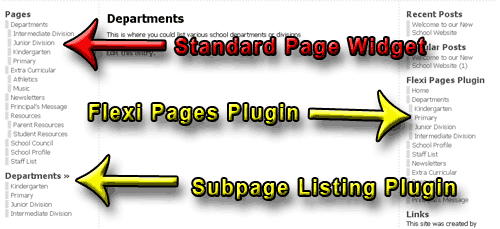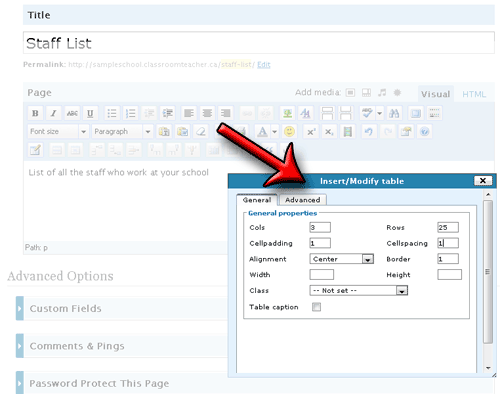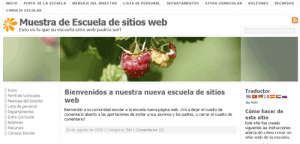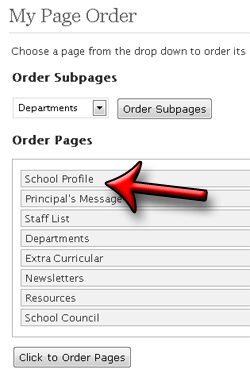We’re writing our ebook with step-by-step instructios on how to make a school website or classroom blog and quickly remembering why we like self-hosted WordPress blogs so much.
Lots of teachers start their classroom blogs using a free WordPress blog or Edublogs account. And quite frankly, that’s the right place to start:
- It’s free.
- There’s a lot of support. (Edublogs is an entire community of educators blogging on their edu-blogs.)
- It’s simple. You don’t need to be a technical whiz-kid.
For many classroom teachers, the free blogs will meet all of their needs. Most people never go beyond this stage. (Heck, most teachers never get online!)
But, for some of us, it’s not enough. We want more. We see what other people are doing with their blogs and we want the unlimited freedom that comes with a self-hosted WordPress blog.
You see, while WordPress.com and Edublogs.org offer great products, you’re limited to a watered-down version of the WordPress software. You’re not getting all the bells and whistles because you can’t install any new themes or plugins.
When is the right time to transfer your classroom blog from a free WordPress account to a self-hosted WordPress account? It’s when your imagination exceeds the options provided by the free blog account.
A self-hosted WordPress blog is not for everybody, but here are a few of the features that you can’t get with a Free WordPress Account or Edublogs Account:
- Infinetely Expandable through Plugins and Themes
- Translate your School Website or Class Blog into Different Languages
- Better Page Navigation
- Easier to Move Pages Around (Change the Page Order)
Infinetely Expandable through Plugins and Themes
Free WordPress Account
With a free WordPress.com or Edublogs.org account, you only get the themes or plugins that they provide.
Self-Hosted WordPress Account
But, there’s so much more. There are over 2,787 free plugins listed in the official WordPress Plugin Directory and over 170 free themes listed in the official WordPress Theme Directory. (And, there’s a lot more online if you just do a Google search!)
Installing new themes is a little bit of a headache. You have to upload the theme to your webserver before you can point-and-click on it to activate it. However, installing new plugins on a self-hosted WordPress blog is now ridiculously easy.
Plugin Central is a plugin that lets you install other plugins all from your WordPress dashboard. No more uploading the plugin to the wp-content/plugins folder on your web server and then activating it from your dashboard. Now, you can manage everything online.
You can now automatically install and update plugins just by typing in the name or the exact url of the plugin.
In the example, you can see that we added the global translator plugin and the tinymce-advanced plugin all from our online dashboard.
Translate your School Website or Class Blog into Different Languages
The reality is that many of us teach in multicultural schools. Not everyone is fluent in English, and often times the parents of our new immigrant families can’t access school resources because material is not provided in their first languages.
There are several translation services online (i.e. Google Language Tools, Babblefish, etc), but why not make things easier for your students and parents by translating your school website or classroom blog into multiple languages?
Free WordPress Account
If Edublogs.org or WordPress.com not provide the Global Translator plugin, then you’ll have to find another way to add translation services to your class website.
Self-Hosted WordPress Account
Global Translator is a plugin that will automatically translate your blog into any of the following 13 languages: English, French, Italian, German, Portuguese, Spanish, Japanese, Korean, Chinese, Arabic, Russian, Greek, Dutch, Norwegian, Bulgarian, Czech, Croat, Danish, Finnish, Hindi, Polish, Rumanian and Swedish. (It uses Google Translation services, along with a few others to do this.)
You can select which languages you want to make available, and then you simply add a widget to the sidebar displaying various flags.
Here is our sample school website translated from English into
French,
Spanish,
and Arabic:
Better Page Navigation
Free WordPress Account
- You can add a widget to your sidebar listing all of the pages in your classroom blog.
- If you have any subpages, they can show up as indented pages.
- You can sort the pages alphabetically, by page order, or by a page ID that you assign.
- You can exclude certain pages.
Self-Hosted WordPress Account
There are several plugins that can make your life easier to display your page navigation
WordPress Navigation List Plugin NAVT
 The Navigation Tool for WordPress (NAVT) is a highly customizable plugin that lets you pretty much get your website navigation the way you want it. You can click-and-drag everything from the pages to categories to authors to links to create the ultimate list of pages.
The Navigation Tool for WordPress (NAVT) is a highly customizable plugin that lets you pretty much get your website navigation the way you want it. You can click-and-drag everything from the pages to categories to authors to links to create the ultimate list of pages.
You also have control over the styling and positioning of your web site’s navigation. (You can use it either as a widget, or by looking at your theme, you can even identify the markers where the NAVT plugin should go. Heck, you can even replace the existing navigation of a theme!)
The 3 best features of this plugin:
- You can create a horizontal navigation tool bar. You can’t do that with a free WordPress blog.
- You can create a drop-down menu with your navigation.
- You can create a breadcrumb trail (Home > Classrooms > 8b)
2 downsides with this plugin:
- We found was that it was unreliable. Sometimes we would set the menu up, but it wouldn’t display properly. Also, there’s a backup-and-restore feature, but we couldn’t get it to work reliably.
- Clicking and dragging all of your pages takes time. There’s no quick way to transfer groups of pages over. (With the other plugins, they automatically list all of your pages. This plugin requires you to transfer over your pages one by one.)
Still, if you have time to play, this is the most powerful page navigation plugn we’ve found so far because it lets you go beyond simply listing your pages in the sidebar.
A quick and easy sidebar widget that gives you more options that the standard pages widget on a free WordPress account.
- More options. (i.e. display only the current sub-pages and not all subpages.)
- Option to include a link to the home page.
- Other options include title, sort column/order, display and depth options.
- Multiple instances of the widget.
- This widget can be placed anywhere on your site (and not just on the sidebar)
The standard page widget displays all of the pages. But what if you only want the subpages?
- It only displays the subpages if you are on a page that has subpages. (That way there is less confusion.)
- You can sort the subpages alphabetically or by menu order.

Easier to Move Pages Around (Change the Page Order)
Free WordPress Account:
You have to open up each page, go to the bottom, give the page a number from 1-9 and try to remember what page order you gave your other pages to sort them properly. It becomes a hassle when you have multiple pages on your school website.

Self-Hosted WordPress Account
My Page Order is a neat little plugin that gives you manual control over setting the order of your WordPress pages by letting you easily set an explicit order.
It works with subpages too and now has built-in Widget support. Once you install the plugin, all you have to do is click and drag the order of all of your school pages.
There is also a similar plugin to quickly change the order of links (My Link Order) and categories (My Category Order).
Easy to Insert Tables
Free WordPress Account:
If you’re making a school website, chances are you’ll want to have a page listing your current staff. You’ll probably want to have that list as a table.
The problem is, if you’re using a free WordPress or Edublogs account, it’s hard to insert tables. (It can be done, but you have to code it in yourself using HTML).
Self-Hosted WordPress Account
With a self-hsted WordPess account, you can install the TinyMCE Advanced plugin which adds This plugin adds 16 features to the default WordPress, including the ability to add tables with complete control over the table properties.

Bottom Line
Moving up to a self-hosted WordPress blog isn’t for all teachers. You get more options and features, but it costs money and a little bit of technical-know-how to tweak your classroom blog.
What do you use to run your School Website or Classroom Blog?





I agree. A self hosted blog is much better. Given my blog as an example http://quagmires.wordpress.com/
I’m doing a blog change where my free blog will be self hosted. Disclaimer: I’m not a teacher even though this was very helpful. Thanks! 🙂
Hey Fiji,
Thanks for the compliment. Checked out your wordpress.com site, and think you’ll enjoy the freedom of options when you switch over to a self-hosted wordpress site.
Good luck!
Kisu
I don?t usually reply to posts but I will in this case. I?ve been experiencing this very same problem with a new WordPress installation of mine. I?ve spent weeks calibrating and getting it ready when all of a sudden? I cannot delete any content. It?s a workaround that, although isn?t perfect, does the trick so thanks! I really hope this problem gets solved properly asap.